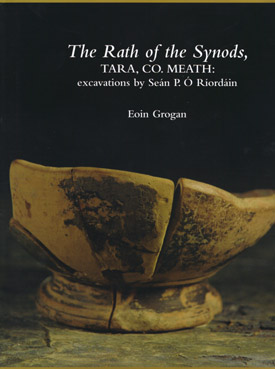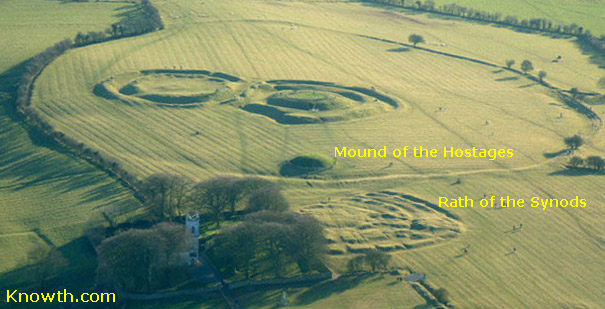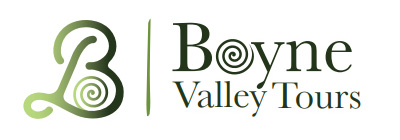The Rath of the Synods: Tara, Co. Meath
 The Rath of the Synods: Tara, Co. Meath, excavations by Seán P Ó Ríordáin -
Eoin Grogan with contributions by Caroline Velzian and Seamus Caulfield.
The Rath of the Synods: Tara, Co. Meath, excavations by Seán P Ó Ríordáin -
Eoin Grogan with contributions by Caroline Velzian and Seamus Caulfield.
A companion volume to The Mound of the Hostages, Tara, this report presents the results of Seán P Ó Ríordáin's unpublished excavations carried out in the 1950s at the Rath of the Synods.
The site had a complex sequence of ritual, funerary and domestic activity which is divided into four main phases. The earliest is undated but is represented by a ditched enclosure that may be of the Bronze Age or Iron Age, while the second dates from the late Iron Age and consists of a series of ritual or ceremonial enclosures with strong parallels at Emain Macha and Dún Ailinne.
Purchase at Amazon.com or Amazon.co.uk
In the third phase there are two cemeteries, one contained in a barrow and the other unprotected, of the early centuries AD. The domestic enclosure of the Rath of the Synods itself was built and occupied in the fourth phase.
There is a substantial and significant material assemblage from the site. While in the third phase this reflects a very strong element of contact with Roman Britain in the third to fourth century AD, disentangling the native from the Romano-British contribution is especially complex as no other Irish site has produced a comparable set of evidence. The material suggests, however, either interaction between the occupants and allied or related communities in Britain or possibly the domestic site of a family from the fringes of the Roman world.
Every effort has been made to present Seán P Ó Ríordáin's own interpretation of the site. Nevertheless, while respecting his scholarship, more recent research has advanced our understanding of the periods in question and evidence has been reassessed in that light. Every effort has been made to assess all the available material, including the uncontexted finds.
Summary
This is a report on the archaeological excavations at the Rath of the Synods (Ráith na Senad) on the Hill of Tara, Co. Meath, Ireland. The excavations were directed by Seán P Ó Ríordáin, then Professor of Celtic Archaeology at University College Dublin, who spent two summers at the site (1952 and 1953). His discoveries are supported here by post-excavation research and a series of radiocarbon determinations from samples collected by his team.The earliest recorded human activity at the Rath of the Synods took place during the late Neolithic and can be associated with the primary use of the megalithic tomb at the nearby Mound of the Hostages, with which it is contemporary. A significant phase in the life of the complex occurred during the Iron Age, in the final centuries BC, continuing into the mid-first millennium AD. In the earlier Iron Age (in the centuries after 400 BC) a number of palisade enclosures were constructed, leaving a general figure-of-eight trace. A small number of Iron Age artefacts were recovered from this complex. Later in the Iron Age, during the second to fourth centuries AD, a considerable amount of activity took place at the centre of the site: post-built structures were erected and Roman glass and pottery were deposited.
The Roman assemblage is not typical of what would be expected on a contemporary provincial Roman site in Britain. The Tara material is more specialised, consisting of drinking vessels. A feature of the evidence from the Rath of the Synods is the occurrence of burials, some associated with a barrow of unknown prehistoric date but assumed to be Iron Age, and some occurring in a flat cemetery close to the centre of the multivallate enclosure. These might conceivably have been broadly contemporary but it is more likely that they reflect a sequence of burial activity, or at least more than one phase. Radiocarbon analysis suggests that one of the extended burials dates from as late as the thirteenth century AD.
Chapter 1 introduces the site, sets out the context of the excavations and outlines the difficulties of publishing from an old excavation archive. Chapter 2, based heavily on the traditional approaches of stratigraphy and typology, attempts to unravel the earlier Iron Age sequence of activity at the site. Chapter 3 deals with the burials from the site, Chapter 4 provides detailed information on the complex dubbed 'the residential enclosure', and Chapter 5 discusses various aspects of the enclosure. There follows, in Chapter 6, a general discussion of the Rath of the Synods. The reader's attention is drawn in particular to Appendix J, dealing with radiocarbon dating, which provides significant chronological data that emerged after Dr Eoin Grogan had completed the text.
Purchase at Amazon.com or Amazon.co.uk

The Rath of the Synods so named because of the synods (church councils) said to have been held there by St. Patrick, St. Ruadhan and St. Adamnan.
Boyne Valley Private Day Tour
 Immerse yourself in the rich heritage and culture of the Boyne Valley with our full-day private tours.
Visit Newgrange World Heritage site, explore the Hill of Slane, where Saint Patrick famously lit the Paschal fire.
Discover the Hill of Tara, the ancient seat of power for the High Kings of Ireland.
Book Now
Immerse yourself in the rich heritage and culture of the Boyne Valley with our full-day private tours.
Visit Newgrange World Heritage site, explore the Hill of Slane, where Saint Patrick famously lit the Paschal fire.
Discover the Hill of Tara, the ancient seat of power for the High Kings of Ireland.
Book Now
Home
| Newgrange
| Knowth
| Dowth
| Hill of Tara
| Fourknocks
| Loughcrew
| More Places
| Labyrinths
| Local Info
| Art Works
| Articles
| Images
| Books
| Links
| Boyne Valley Tours
| Contact
